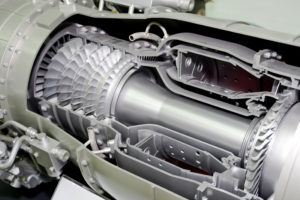A Case Study in Part Cleanliness
 Recently on several precision cleaning jobs we were unable to meet the cleanliness requirements on anodized aluminum* parts that contained internal passageways. Regardless of how many times we cleaned and tested the parts, a never-ending stream of small aluminum chips kept showing up in the test samples.
Recently on several precision cleaning jobs we were unable to meet the cleanliness requirements on anodized aluminum* parts that contained internal passageways. Regardless of how many times we cleaned and tested the parts, a never-ending stream of small aluminum chips kept showing up in the test samples.
After close study, we discovered that the parts had not been cleaned prior to being sent to the anodize vendor. During the anodize process, machining chips became adhered to the sides of the internal passages, which started flaking off randomly during precision cleaning.
Most aircraft engine specifications require the machining house to perform “In-Process Cleaning”, also known as “clean as you go”, to prevent this kind of situation. Precision cleaning is not designed to remove gross manufacturing debris.
Over the years, we’ve learned that obtaining a “good, clean” anodized part requires thorough cleaning prior to the anodize process. This is especially true for components that have internal passageways, including intersecting cross drills and inaccessible recesses.
A contributing factor is that many of the aqueous based coolants in use today tend to evaporate quickly and form a sticky residue that is infamous for entrapping machining chips and locking them onto the surface of the part. These particles stick to the surface and insulate it from the electrolyte fluid and the electrolytic action actually “burns and locks” the chips onto the surface of the part. Depending on how tightly they adhered to the surface by the anodize process, it’s nearly impossible to remove them during precision cleaning.
To prevent this from happening, the parts must be cleaned immediately after each machining operation to remove coolant and chips before the coolant can coagulate and entomb the chips in the part. Exotic methods are not required for an effective job of removing coolant and chips.
For aqueous based coolants, simply flush the passages with water and follow by drying with water/oil/particle-free shop air. It is always a good practice to start flushing the smallest holes first and work up to the largest, preventing chips from becoming lodged in restriction points.
As Benjamin Franklin said, “An ounce of prevention is worth a pound of cure.”
For more information on effective flushing techniques, call Chuck Osborn at 860-698-9266, or email him @cosborn@ptiindustries.com.
* The same holds true for components of any alloy with internal passageways.




Leave a Reply
Want to join the discussion?Feel free to contribute!